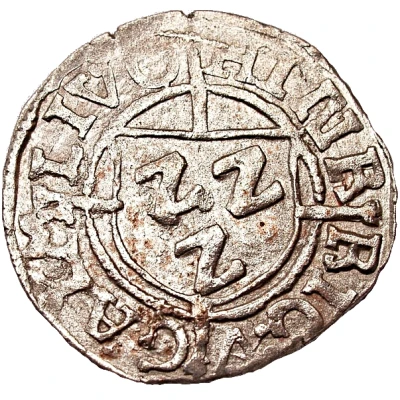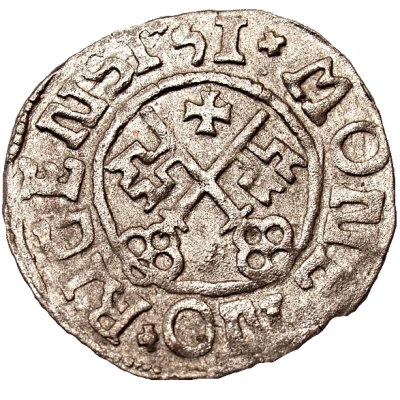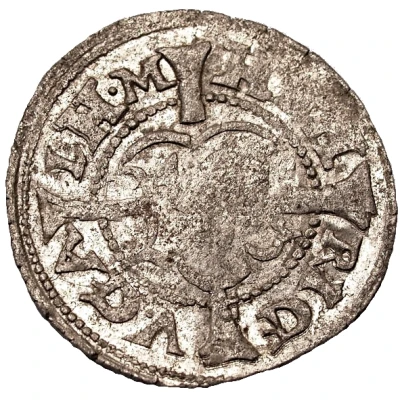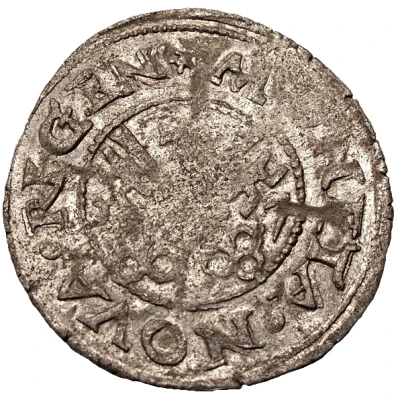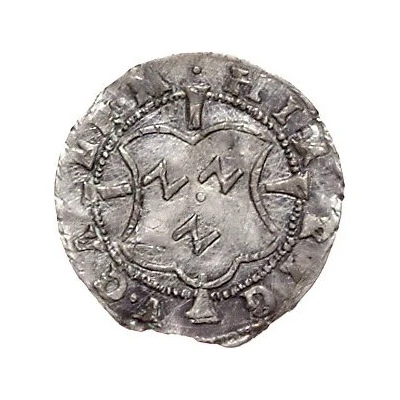
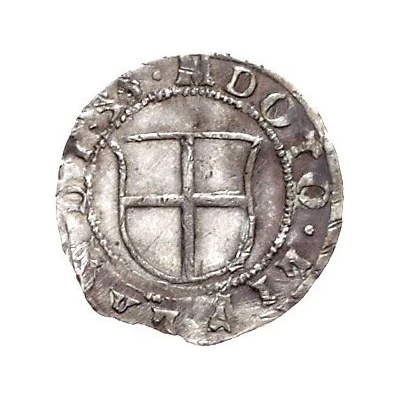

© Emporium Hamburg
1 Schilling - Heinrich von Galen Wenden
1556 year| Billon (.1875 silver) | 1.12 g | 18 mm |
| Issuer | Livonian Order (Livonian Confederation) |
|---|---|
| Master | Henry of Galen (1551-1557) |
| Type | Standard circulation coin |
| Year | 1556 |
| Value | 1 Schilling |
| Currency | Schilling (1422-1561) |
| Composition | Billon (.1875 silver) |
| Weight | 1.12 g |
| Diameter | 18 mm |
| Thickness | 0.7 mm |
| Shape | Round (irregular) |
| Technique | Hammered |
| Orientation | Variable alignment ↺ |
| Demonetized | Yes |
| Updated | 2024-10-06 |
| Numista | N#141924 |
|---|---|
| Rarity index | 97% |
Reverse
Cross in shield surrounded by legend.
Script: Latin
Lettering: M · D · O · TO · LIFTLANDT · 56
Translation:
Magistri Deutschen Ordins To Livland
Master of the Teutonic Order of Livonia
Edge
Plain
Comment
Depending on the source, this coin is listed as being minted at Riga (being listed as a "Wenden-type") or at Wenden. Because the mint's name is not mentioned in the legend, Wenden is the most likely mint.Interesting fact
The Livonian Order, also known as the Livonian Confederation, was a military order that played a significant role in the history of the region now known as Latvia and Estonia. The Order was founded in the 13th century by the Bishop of Riga, and its members were mostly German-speaking knights who were tasked with protecting the local population and spreading Christianity. The Livonian Order was unique in that it was a military order that was not directly affiliated with the Teutonic Knights, although it shared many similarities with other military orders of the time. One interesting fact about the 1 Schilling coin featuring Heinrich von Galen is that it was minted during a time of great turmoil for the Livonian Order. In the mid-16th century, the Order was facing threats from both the Russian Empire and the Swedish Empire, and it was forced to seek protection from the Polish-Lithuanian Commonwealth. Despite these challenges, the Livonian Order continued to mint its own coins, including the 1 Schilling coin featuring Heinrich von Galen, which was likely used for everyday transactions within the Order's territories.
